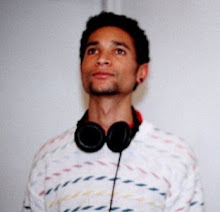Art Forum February 2005
by Matthew Higgs
Working through the past in order to illuminate the present, the San Francisco-based artist Kota Ezawa has described his practice as a form of “video archaeology.” His signature style—a digital approximation of paper-cutout animation—is evocative of the deliberately awkward graphic mannerisms of South Park and lends both a physical and psychological flatness to his works that mirrors what Ezawa has described as the “banality” or “hollowed-out” nature of his iconic yet overexposed source material (typically, archival news footage or the movies).
Raised in Mössingen, Germany, Ezawa studied for four years at Düsseldorf’s Kunstakademie with Nam June Paik and Nan Hoover before relocating to the Bay Area in 1994 to complete his undergraduate degree at San Francisco’s Art Institute (where he studied with Nayland Blake and maverick filmmaker George Kuchar). In addition to ongoing collaborative activities that include musical and theatrical performances with the artists’ collective hobbypopMuseum, Kevin Killian and the San Francisco Poets Theater, and Karla Milosevich (who with Ezawa and Craig Goodman makes up the Helen Lundy Trio keyboard ensemble), Ezawa is gaining wider attention for his compelling animated video works, which have recently been screened in exhibition and film festivals in New York, San Francisco, Vancouver, and Berlin.
Ezawa’s earliest films, such as Superkraft, 1995, and Aquatorious, 1996, employed actors in scripted narratives that played off established Hollywood genres such as superhero or action movie. Having abandoned live-action filming in 1998, Ezawa began making independent animated work with Home Video, 2001. Attracted to animation for what he calls its “constructed” nature, Ezawa has, somewhat combatively, described his solitary and labor-intensive process as a struggle between himself and the computer.


Home Video is an endlessly looping three-minute digital animation that features a static shot of a suburban tract home taken from a Bay Area real-state brochure. The only “action” is the constant movement of clouds across a sky that alternates between night and day and the switching on and off of the house’s interior lights by its unseen occupant. Reminiscent of a screen saver, Home Video also owes a debt to Andy Warhol’s epic film Empire, 1964, in which a static architectural motif is also the central “character” and the primary “action: also consists of shifting meteorological patterns and the switching on and off of a building’s interior lights. Simultaneously cheerful and depressing, Home Video is a pop-situationist conundrum: a melancholic riff on social alienation and the interminable monotony of contemporary suburban experience.

Ezawa shifts his focus from anonymity to notoriety in The Simpson Verdict, 2002, a three-minute digitally animated video projection based on the (still) astonishing denouement of the 1995 trial of O.J. Simpson, during which he was acquitted of the murders of his ex-wife Nicole Brown Simpson and her friend Ronald Goldman. Abstracted—and graphically simplified—from courtroom footage, The Simpson Verdict’s jerky movements echo the staccato rhythms of the original fixed-position, single-camera trial recordings. (Ezawa was familiar with the filming style from his experience as an occasional courtroom cameraman in the late 90’s.) Ezawa’s decision to retain the sparse original sound track—which is largely mute aside from brief procedural comments from the judge, the jury’s verdict, and muffled sounds of astonishment and grief from those present—lends The Simpson Verdict something of the quality of a silent film: Our attention is focused largely on the character’s actions. Ezawa’s re-imaging of the events privileges (and exaggerates) the slight yet revealing gestures of Simpson and his legal team as they anticipate and learn his fate. The turn of a head, the raising of an eyebrow, the shifty movement of Simpson’s eyes serve to intensify the human drama. The Simpson Verdict condenses history to a compelling narrative from a series of nervous gestures and tics.

Ezawa’s most recent work, Lennon Sontag Beuys, 2004, is a three-channel animated video projection based on existing footage of more measured but no less impassioned “performances” (Ezawa’s term): public speeches by John Lennon, Susan Sontag, and Joseph Beuys. Displayed side by side, the three animated characters speak simultaneously, as if competing for our attention. Lennon, seen in bed with Yoko Ono and surrounded by journalists, touts the potential of nonviolent protest; the late Sontag, seen in a recent lecture at Columbia University, discusses how images of violence might be considered instruments of protest; and Beuys, filmed in the ‘70s during a public forum at the New School in New York, expounds on his thesis of “social sculpture.” What initially appears to be a cacophony gradually becomes—as each speaker’s voice ebbs and flows and as the viewer acclimates to the individual dialects and accents—more distinct; it’s a scenario Ezawa has described as being akin to the experience of overhearing fragments of conversations as one moves through a crowd. Ezawa sees Lennon, Sontag, and Beuys not only as agents for social change but also as representatives of the historically entangled nations of England, the United States, and Germany and as ideologues for the musical, literary, and plastic arts. No single member of this triumvirate fully articulated Ezawa’s views, but collectively they synthesize his stated interests in “popular music, concerned seriousness, and German metaphysics.”
The Brawl, 2008


This juxtaposition—a kind of earnest yet skeptical relationship with popular culture combined with a wry sense of humor—reverberates throughout Ezawa’s deceptively simple works. When considered together they present a somewhat maudlin outlook: a world full of isolated marriages, and the seeming futility of protest. That is, a world not unlike the one we presently occupy.

No comments:
Post a Comment